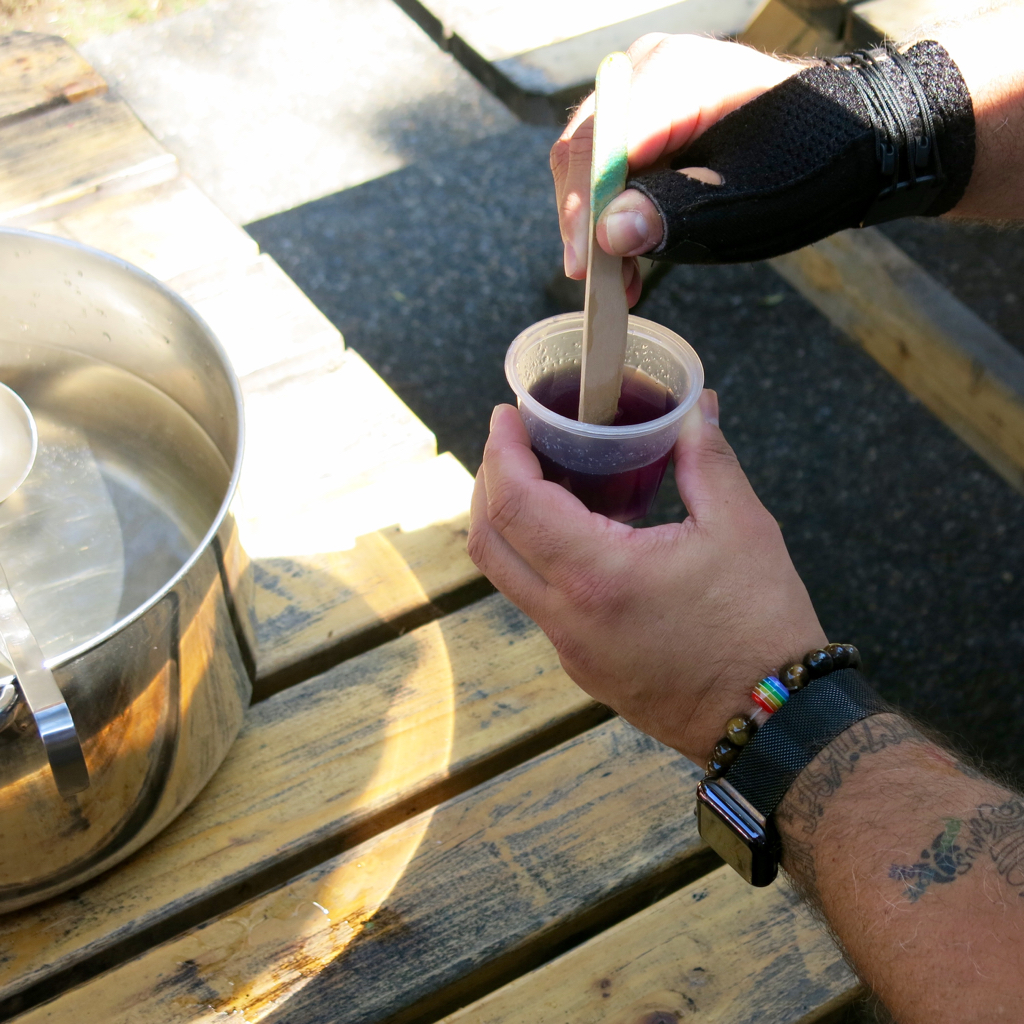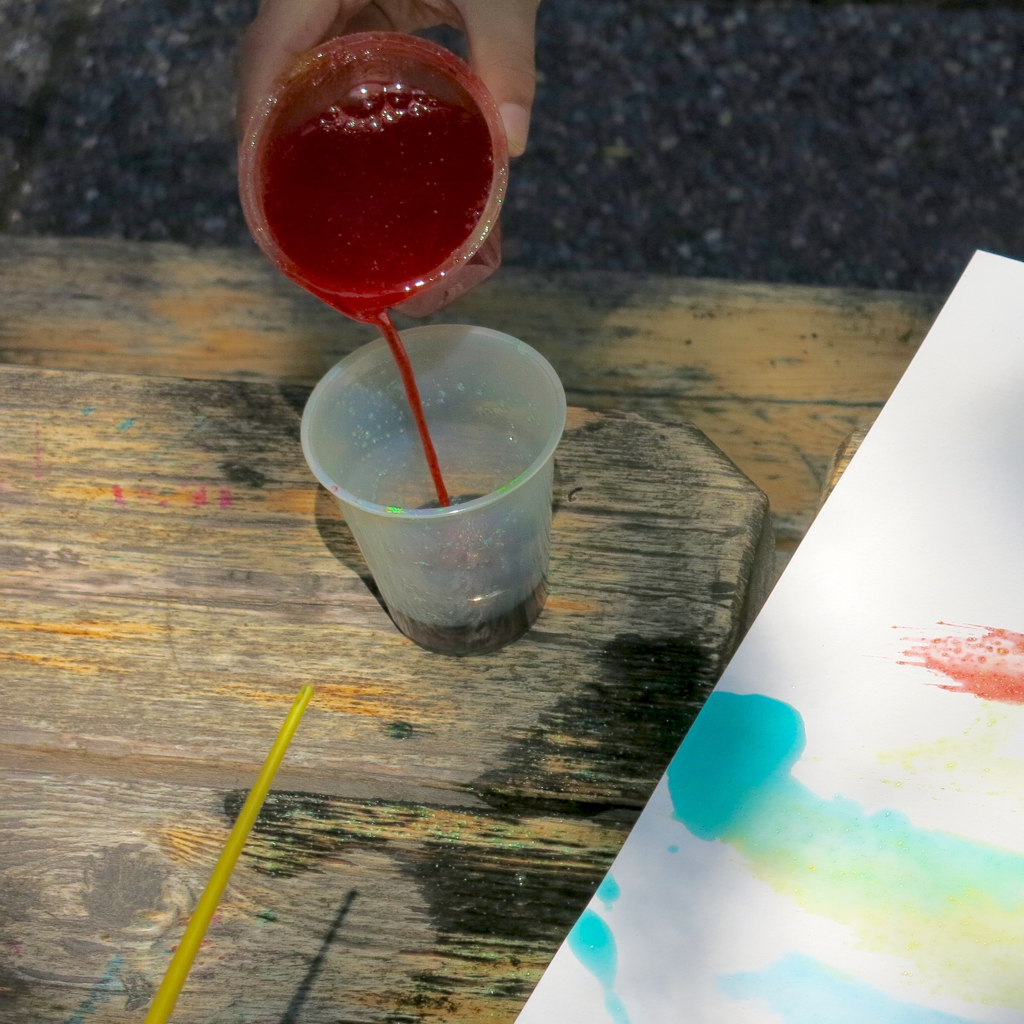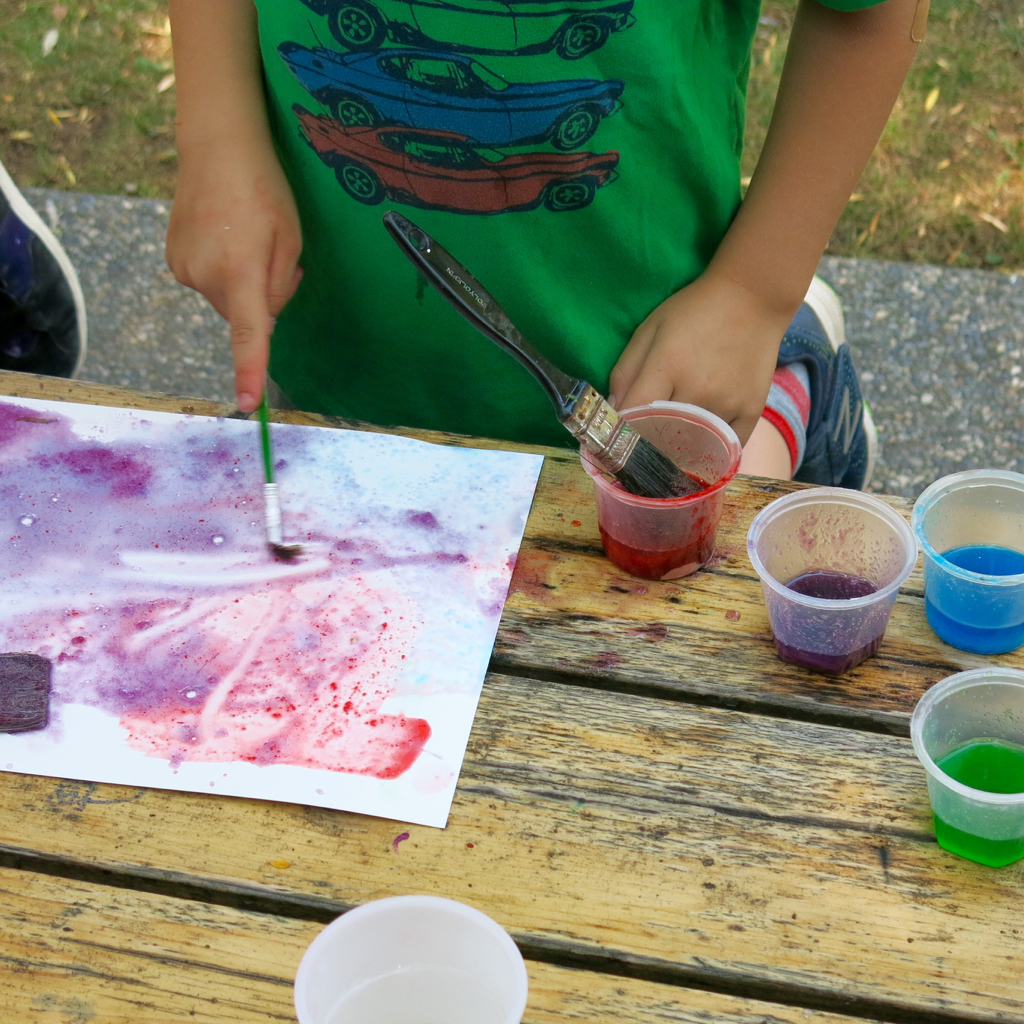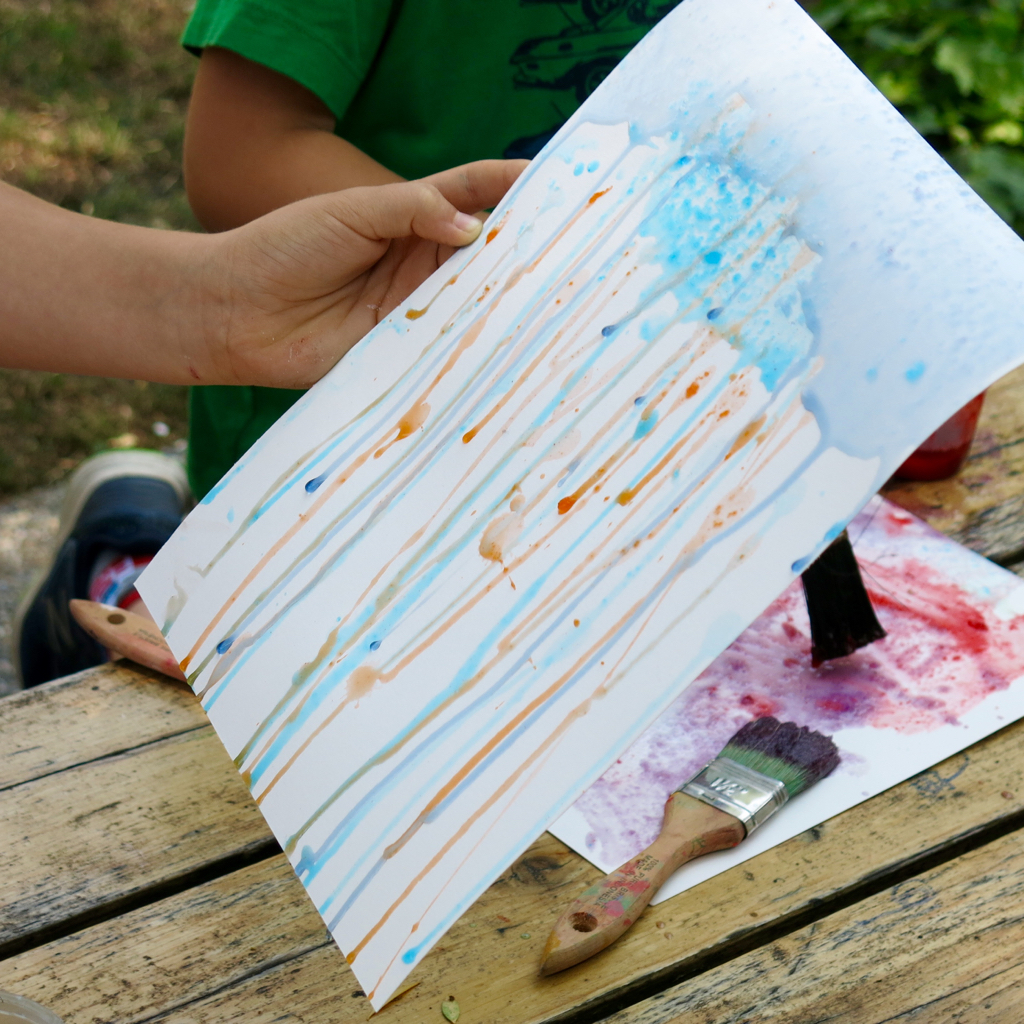My sister-the-children’s-librarian keeps telling me how much fun it is doing process art and sensory art with kids. So this Sunday I decided to do jello-painting in Sunday school. (The term “Jell-o” is a a registered trademark of Kraft Food Groups, but I’m using “jello” as a generic term for any gelatin-based sweet dessert.)
At the local supermarket, I found jello in all the colors of the rainbow: cherry for red (it looked like a deeper red than strawberry or raspberry), orange for orange, lemon for yellow, lime for green, some random berry flavor for blue, and grape for purple. Since I was expecting 8-12 children, I got six ounces of each color — er, of each flavor — whatever you want to call them.
I figured jello-painting would take about twenty minutes, so we did some other activities first. Then we went outside to the picnic tables, where I had already set up a can full of paint brushes, a whole bunch of little cups to mix colors in, wooden stirring sticks, and several cups of plain water to clean brushes in. The packages of jello powder were on a separate table, along with a big pot of very warm (but not hot, for safety’s sake) water with a couple of ladles.
I gave a quick demonstration: pour some jello powder into one of the little mixing cups, add some warm water, stir with one of the wooden stirring sticks, then paint on the paper. Then I gave each child a piece of watercolor paper, and let them figure out the rest for themselves. It took them a moment to realize that Barb and I were just there to facilitate the process, but we weren’t going to tell them how to do things. Then they liked the idea that they could just play with the materials. Barb helped this process — he quickly started making his own painting, asking the other children if he could borrow some of their orange jellopaint for the sunset he was making.
Below is a photo of Barb mixing some of his own jellopaint — you can see the pot of very warm water with a ladle in it, to the left:
(I really like the fact that I have a photograph of a Moderator of the Unitarian Universalist Association — the highest elected office in our denomination — mixing jello to use as paint.)
The photo below shows a good consistency for jellopaint — you should be able to pour it, but it needs to be pretty thick. The lighter colors, like yellow and orange, needed to be even thicker than the photo — half a mixing-cup full of jello powder, then add just enough warm water to cover the powder.
Below is a photo of one of the children painting with the jellopaint; this child has mixed several cups of colors to experiment with. Pretty soon, kids started mixing colors together, and one of the favorite colors to mix was brown, which was dubbed cola-colored.
The kids experimented with different ways of applying jellopaint — below one child is letting the jellopaint drip and flow across the paper.
When it was time to clean up, we had made a pretty big mess; good thing we were outdoors. As parents came to pick up their children, it was obvious they didn’t want jellopaint masterpieces in their cars, so Barb and I made a point of telling the kids they had to compost all their paintings. We had a busing tray filled with soapy water, and all the mixing cups, brushes, and stirring sticks went into the soapy water. Then we got a hose and some of the kids helped us hose down the picnic tables, and the concrete floor; hosing down the tables was actually one of the most fun parts of the activity.
So that’s what we did in Sunday school today. What was the purpose, you ask? About the same purpose as meditation — to do next to nothing in a purposeful fashion, and so to regenerate your soul. Except that with jellopainting you get to engage sight, smell, taste (who can resist tasting a little of the jellopaint?), and touch (it’s definitely sticky); hearing comes into the activity as well from talking and listening to each other.





I can’t wait to try jello painting at the library – sounds like fun!
Tomorrow I’m doing process art with the 4’s & 5’s: Frozen Balloons (from Maryann Kohl’s book). I’ve filled a lot of balloons with water & frozen them. Tomorrow we’ll peel the balloons off the ice, then dump the ice in large buckets of water and play with pouring these things on them: salty water, salt, liquid watercolors, food coloring. Stir and enjoy! (And work a little science talk in, too.)